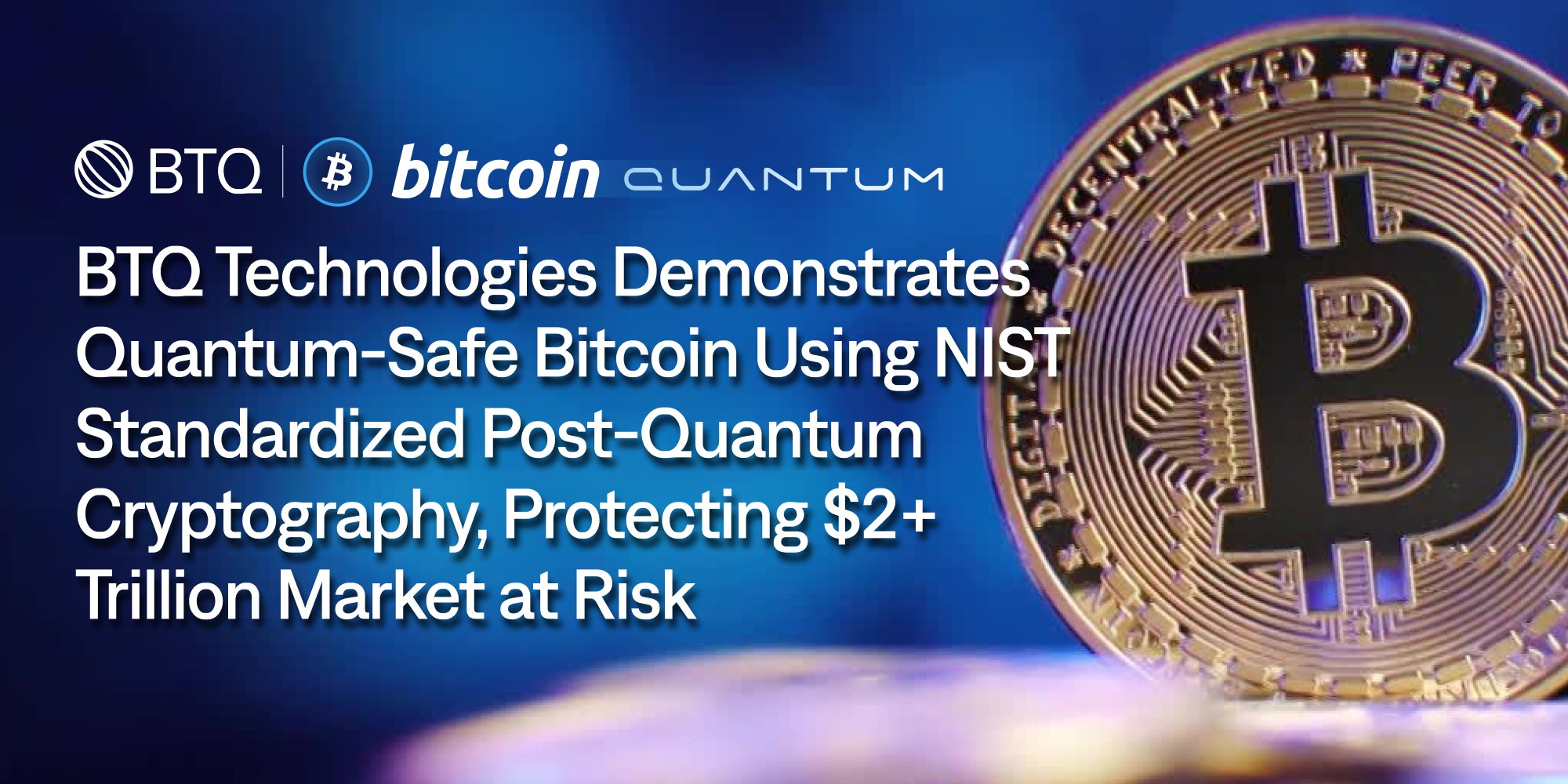
BTQ Technologies Corp. (Nasdaq: BTQ) has announced the successful demonstration of a quantum-resistant Bitcoin implementation, replacing the cryptocurrency’s quantum-vulnerable ECDSA signatures with NIST-approved ML-DSA (Module-Lattice Digital Signature Algorithm). The implementation, named Bitcoin Quantum Core Release 0.2, completes the full lifecycle of wallet creation, transaction signing, verification, and mining using quantum-resistant cryptography.
The implementation is intended to protect the entire $2.4 trillion Bitcoin market, which is vulnerable to quantum threats, including “harvest now, decrypt later” attacks. The demonstration is built on BTQ’s decade-long expertise in post-quantum cryptography (PQC) and includes consensus modifications such as an increased block size to 64 MiB and script limits to accommodate larger post-quantum signatures.
The company is operationalizing the transition by creating a “quantum canary” Bitcoin network with NIST standardized ML-DSA signatures. The commercial roadmap targets protection of the full Bitcoin market by 2026, including a Q4 2025 testnet launch, Q1 2026 enterprise pilot programs with institutional digital asset managers, and Q2 2026 mainnet launch with migration tools.
BTQ also announced the establishment of the BTQ Foundation, co-chaired by BTQ Technologies, which will focus on funding the open-source development of quantum-safe blockchain infrastructure, coordinating industry-wide quantum defense, and developing migration frameworks. This builds on BTQ’s existing PQC leadership, including the Quantum Secure Stablecoin Settlement Network (QSSN).
Read the full announcement here and a related technical overview here.
October 16, 2025